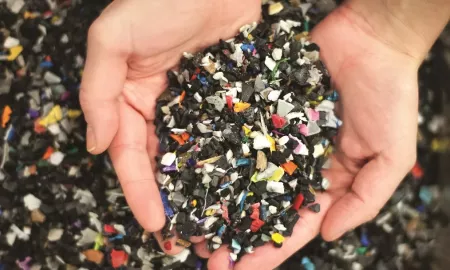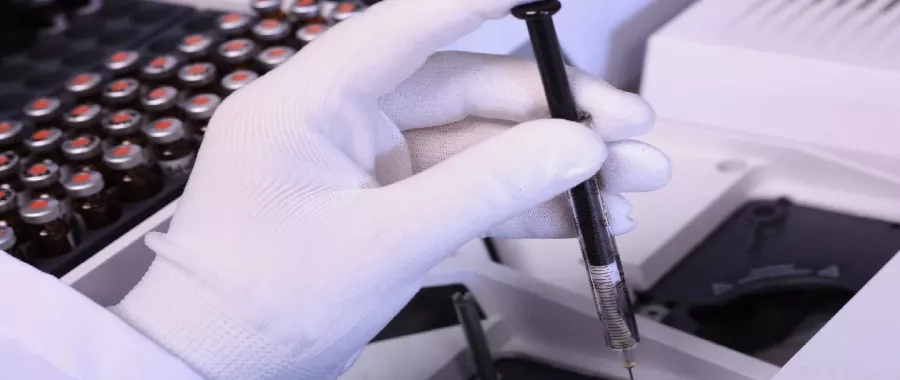Paul Walker, senior development specialist, Specialist Chemistry, Energy Services, explains the science behind fire accelerant analysis, and explores the crucial role it plays in helping fire scene investigators studying incidents for insurance claims.

In the aftermath of a fire, once the police have ruled out foul play, fire scene investigators are often called in by insurers to help them understand the events surrounding the incident. The information gained from these forensic fire investigations is an important part of the decision-making process for insurance claims.
In order to gain a full understanding of how a fire happened, it’s crucial that investigators are able to identify what caused the flames to spread. This means finding the ‘fuel’ which, together with heat and oxygen, is an essential part of the fire triangle, or the ‘accelerant’ – the material that promoted the spread of the fire to other combustible materials. A wide range of substances can act as an accelerant in the right circumstances, including lighter fluid, petrol, paraffin and solvents. Combustible materials, such as wood, plastics, foam, paper, cigarette ends and even dust or flour, can also accelerate a fire.
This is where laboratory analysis comes in – forensic scientists can inspect samples of suspected materials taken from the site by investigators and test their chemical make-up to understand whether they have been instrumental in the progression of the fire.
Preparing the samples
When collecting samples for analysis, it is highly important that they are handled correctly to protect them from damage and safeguard their integrity as potential evidence in the investigation. With this in mind, many laboratories offer their own courier services to insurers to speed up the testing process and ensure that a trusted chain of custody is maintained.
To protect the samples from damage or possible contamination in transit, they are packaged in specially designed nylon bags, sealed with security tags to eliminate the risk of tampering. The samples are kept at a controlled temperature throughout the course of their journey to the laboratory, as any excessive heat could lead to chemical changes in the material, potentially impacting on the results of the analysis.
Once the samples are received, they then have to be prepared for analysis by releasing and isolating any potentially flammable chemicals ready for testing. These chemicals are classified as either Volatile Organic Compounds (VOCs), such as benzene, toluene, xylenes and acetone, or Semi-Volatile Organic Compounds (SVOCs). The former are easily released into the atmosphere as a vapour when heat is applied, while the latter, being less volatile, require solvent extraction to release them from the sample.
Releasing VOCs
To identify all the VOCs present in a material, it must first be heated – still in its sealed bag – in a specialist oven at 100° C for 30 minutes. This will allow any volatile chemicals in the sample to be released, remaining trapped inside the bag. Following this process, a syringe is used to take a sample of the gaseous compounds, ready to be tested in a mass spectrometer.
Alternatively, scientists can take a set quantity of the gases released from the sample and pass it through a desorption tube containing Tenax, a sorbent capable of collecting gas molecules. Any VOCs present in the gas will be absorbed by the Tenax, which can then be analysed in the mass spectrometer to determine the make-up of the compounds in the sample.
This desorption tube method is particularly suitable for detecting trace amounts of potential accelerants, as it allows small quantities of VOCs to be concentrated prior to analysis. However, there is a risk with this type of analysis that trace levels could be overstated. This can lead to them being falsely identified as the accelerant, which is why it is important that expert scientists and consultants are involved to ensure results are properly interpreted. This is a particular risk in cases where plastics have been involved in a fire. When burnt, such materials can leave ‘artefacts’ – trace amounts of volatile materials – which can, without due care, be misinterpreted as the remains of the accelerant responsible.
Preparing SVOCs
Analysing potential SVOC fuels is particularly important when investigating fires in kitchens and sites where mechanical processes have taken place. These spaces can host high quantities of materials containing organic compounds, including diesel, oil-soaked cloths, lubricants, as well as grease and fat in kitchen ducts. These won’t necessarily ignite after coming in contact with a spark, but exposure to an open flame, or excessive heat could result in combustion.
The relatively low volatility of SVOCs compared with VOCs means that the procedures for testing are quite different. To free the chemicals of interest from a sample, laboratory scientists typically use solvents to dissolve and extract the semi-volatile compounds from the rest of the material. The resultant mix is then studied via mass spectrometry or occasionally by Fourier Transform Infrared Spectroscopy (FTIR), a technique that produces an infrared spectrum to determine the chemical make-up of a sample.
Running the analysis
Once either the VOCs or the SVOCs are removed from the sample materials, they can then be analysed to find their chemical composition using a mass spectrometer.
Before testing a sample, scientists must test a control specimen with known values to determine whether the mass spectrometer is properly calibrated. A blank sample known not to contain any volatile compounds then has to be run through the instrument until all traces of the control substance have disappeared. This is to eliminate the possibility of any cross-contamination from previous samples affecting the results.
Once the chemical signatures of the volatiles have been identified by the mass spectrometer, they must then be compared with those of substances that are commonly found to be accelerants, such as petrol, heating oils, or nail varnish remover. If the compound’s chemical make-up looks different from those of common accelerants, specimens of comparison substances must then be run through the same mass spectrometer for analysis. These readings are then studied to determine whether they match the sample.
With the analysis complete, the results are then compiled into an in-depth report for investigators to use to inform their analysis of the site under examination. In cases where multiple VOCs or SVOCs are found in a sample, the investigation report will include a detailed interpretation of the results by the consultant in charge of the overall analysis, indicating which compounds he or she believes is most likely to have contributed to the progression of the fire. With this information and guidance, investigators can ensure they have a good understanding of the incident they are studying so they can determine the ultimate cause of the fire.
A full picture
In order to provide insurers with information they need to handle a claim appropriately, investigators need to have a truly accurate picture of how a fire started, how it formed and how it spread.
Taking such a rigorous approach to sample analysis is crucial to achieving this goal, as it can ensure the results received by investigators are as precise as possible, to help them correctly interpret the site under examination.
Having this information, as well as comprehensive support and guidance from specialist consultants, investigators can be confident they have the information they need to develop this understanding of the site they are studying. As a result, they can support insurers in continuing to protect their customers seeking claims.
For more information on SOCOTEC's accelerant analysis, please click here or get in touch with the team.
*This article was first published by International Fire Fighter, the leading global publication for municipal and industrial fire fighters and the fire and rescue industry. For more information, see http://iffmag.mdmpublishing.com/.
Want to find out more about SOCOTEC's fire accelerant analysis service?

You might also like






Add new comment